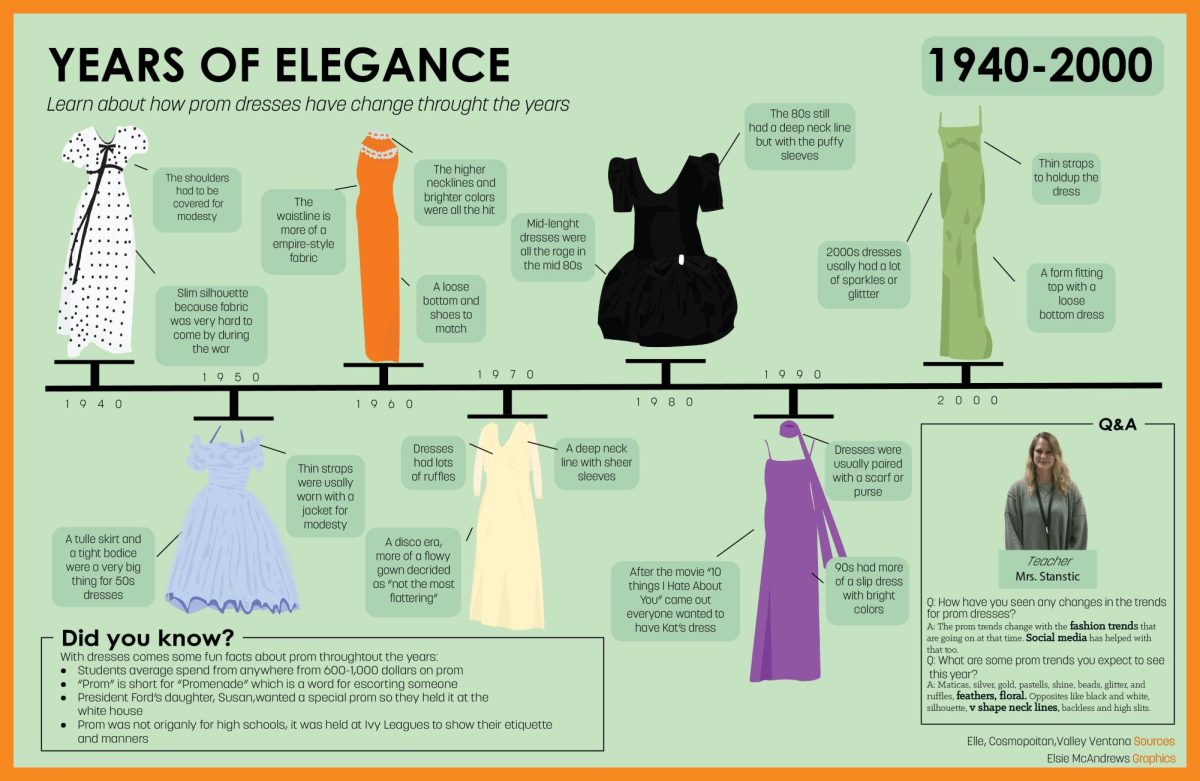By Sara Rogers
<[email protected]>
In 1985, not a single state in America had an adult obesity rate over 15 percent. In 2009, 33 states in the United States saw adult obesity rates of over 25 percent. Something has to give, other than American waistbands.
Last month, the U.S. Department of Agriculture’s (USDA) Center for Nutrition Policy and Promotion issued the release of the seventh edition of its manual, “Dietary Guidelines for Americans (DGA),” the first update since 2005.
While these guidelines are well and good in their own right, it’s impossible for me to ignore the underlying parallel present. The USDA began releasing DGA reports every five years since 1980. Over the last 20 years, Americans have experienced the largest swell in overweight and obesity rates on record. That being said, it would be naive to assume that these new guidelines could significantly alter the lifestyles and eating habits of Americans.
These guidelines, issued by the federal government, do not only impact consumers, but producers as well. In order to keep specific divisions of the food industry afloat (namely red meat and salt enthusiasts), the DGA must remain vague when prescribing which foods to “eat less” of. In the 2010 guidelines, the USDA discussed explicitly when advocating an increase in the intake of fruits, vegetables, seafood, beans and nuts. When discussing which foods to eat less of, however, the USDA avoided specifics, encouraging Americans to avoid sodium, solid fats and added sugar.
To the more informed consumer, these guidelines, regarding both specific foods and vague nutrients, do not require translation. For the majority of Americans, however, the latter terms are foreign vocabulary. Mixing health with politics and economics only harms and confuses the population.
A more reasonable solution? Eat real food. Eat an apple with peanut butter for a snack instead of fruit snacks or packaged cookies. Eat oatmeal for breakfast instead of that Pop-Tart (because, really, “beef gelatin” should not be on the ingredients list of any food I’m consuming). The common misconception of “real food” is that it is just another name for vegetarianism. However, real food can include meat, fish and poultry.
The trick is recognizing the difference between a chicken breast and breaded chicken fingers. A regular chicken breast has one ingredient, the “all-natural” Tyson brand chicken fingers have ten, including sodium aluminum phosphate and sodium acid pyrophosphate.
America has a ridiculous addiction to overly-processed, low-quality, cheap food. The problem isn’t always that we’re eating too much food, it’s that we’re eating too much fake food. Replacing a serving of Cheetos with a Kraft natural cheese stick saves an average of 100 calories and five grams of fat. I won’t even begin to mention all of the chemicals and additives avoided with the switch, because, as evident by the “beef gelatin” example, that can get pretty disturbing.
The 2010 guidelines do acknowledge the importance of real, wholesome food. In the fourth chapter of the document, the USDA states that children, ages 2 to 18, and adults, ages 19 to 30, obtain more than half of their daily fruit consumption through fruit juices.
The USDA follows by saying, “although 100 percent fruit juice can be part of a healthful diet, it lacks dietary fiber and can contribute extra calories.” For instance, a raw apple contains three grams of dietary fiber and 65 calories. One serving of generic apple juice, according to the USDA, contains less than a gram of dietary fiber and 112 calories, doubling that of its raw counterpart.
The movement toward the consumption of real food is already appearing on college campuses with the Real Food Challenge, a national campaign designed to “redirect 20 percent of all food purchased by colleges and universities towards real food by 2020.” Over 340 colleges and universities have officially joined the campaign to develop healthier students and faculty.
It’s important that this transformation start with the younger generation, which is now forecasted to have a shorter life expectancy than that of their parents. It’s far easier to develop healthy lifestyles and eating habits at a younger age while still developing physically and socially.
In order to spark any sort of positive shift in American health, a change needs to come from both producers and consumers. Governmental dietary guidelines can serve as useful tools, but are by no means driving forces of change. Unhealthy eating habits are rooted within American society, emphasizing convenience and cheapness. At some point, however, the well being of society has to overshadow ease and accessibility.
While the newest DGA report contains well-merited information for improving America’s health and well-being, it is inaccurate to assume that it will bring about any real change. Telling someone what to eat does not guarantee a distinct change in diet, which is clearly necessary.



















































![Review: “Suits” is a perfect blend of legal drama and humor [MUSE]](https://hilite.org/wp-content/uploads/2024/04/unnamed-1.png)
![Chelsea Meng on her Instagram-run bracelet shop [Biz Buzz]](https://hilite.org/wp-content/uploads/2024/04/IMG_2446-1200x838.jpg)
![Review: Quiet on Set: The Dark Side of Kids TV is the long awaited exposé of pedophilia within the children’s entertainment industry [MUSE]](https://hilite.org/wp-content/uploads/2024/04/unnamed.jpg)
![Review: “The Iron Claw” cannot get enough praise [MUSE]](https://hilite.org/wp-content/uploads/2024/04/unnamed.png)
![Review: “The Bear” sets an unbelievably high bar for future comedy shows [MUSE]](https://hilite.org/wp-content/uploads/2024/03/unnamed.png)
![Review in Print: Maripaz Villar brings a delightfully unique style to the world of WEBTOON [MUSE]](https://hilite.org/wp-content/uploads/2023/12/maripazcover-1200x960.jpg)
![Review: “The Sword of Kaigen” is a masterpiece [MUSE]](https://hilite.org/wp-content/uploads/2023/11/Screenshot-2023-11-26-201051.png)
![Review: Gateron Oil Kings, great linear switches, okay price [MUSE]](https://hilite.org/wp-content/uploads/2023/11/Screenshot-2023-11-26-200553.png)
![Review: “A Haunting in Venice” is a significant improvement from other Agatha Christie adaptations [MUSE]](https://hilite.org/wp-content/uploads/2023/11/e7ee2938a6d422669771bce6d8088521.jpg)
![Review: A Thanksgiving story from elementary school, still just as interesting [MUSE]](https://hilite.org/wp-content/uploads/2023/11/Screenshot-2023-11-26-195514-987x1200.png)
![Review: When I Fly Towards You, cute, uplifting youth drama [MUSE]](https://hilite.org/wp-content/uploads/2023/09/When-I-Fly-Towards-You-Chinese-drama.png)
![Postcards from Muse: Hawaii Travel Diary [MUSE]](https://hilite.org/wp-content/uploads/2023/09/My-project-1-1200x1200.jpg)
![Review: Ladybug & Cat Noir: The Movie, departure from original show [MUSE]](https://hilite.org/wp-content/uploads/2023/09/Ladybug__Cat_Noir_-_The_Movie_poster.jpg)
![Review in Print: Hidden Love is the cute, uplifting drama everyone needs [MUSE]](https://hilite.org/wp-content/uploads/2023/09/hiddenlovecover-e1693597208225-1030x1200.png)
![Review in Print: Heartstopper is the heartwarming queer romance we all need [MUSE]](https://hilite.org/wp-content/uploads/2023/08/museheartstoppercover-1200x654.png)























![Review: Ladybug & Cat Noir: The Movie, departure from original show [MUSE]](https://hilite.org/wp-content/uploads/2023/09/Ladybug__Cat_Noir_-_The_Movie_poster-221x300.jpg)

![Review: Next in Fashion season two survives changes, becomes a valuable pop culture artifact [MUSE]](https://hilite.org/wp-content/uploads/2023/03/Screen-Shot-2023-03-09-at-11.05.05-AM-300x214.png)
![Review: Is The Stormlight Archive worth it? [MUSE]](https://hilite.org/wp-content/uploads/2023/10/unnamed-1-184x300.png)



